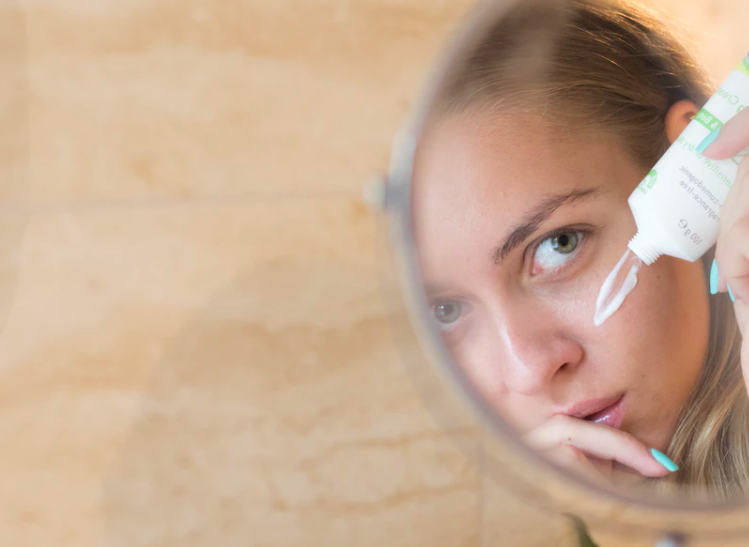In my last article, I touched upon BPA (Bisphenol A) and how it affects PCOS. This chemical is a xenoestrogen, meaning that it’s a synthetic compound that imitates estrogen. As such, it may either behave in the same way as a person’s own hormones, or even interfere with naturally produced estrogen actions.
Triclosan (TCS), a chemical compound similar to BPA, behaves in a similar manner.
What is Triclosan? Where is it Found?
It’s widely used in personal care and household products, such as perfumed soaps, shampoo, toothpaste and liquid disinfectants. [2-3] Triclosan is used in so many products around the world, and many countries are now starting to pay more attention to just how much the chemical affects our bodies. [11-14]
As more people in the general public start doing research about environmental factors that affect their health and wellbeing, concern about triclosan and other EEDCs (estrogen-like endocrine-disrupting chemicals) has increased exponentially. [12-15]
Significant hormonal activities due to TCS has been found in evidencefrom animal and in-vitro studies. These include oestrogenic, androgenic, and antiandrogenic effects, as well as thyroid hormone activity interference. [10-13]
Related: Serum Bisphenol A (BPA) and Testosterone in PCOS
Triclosan’s Role in PCOS
This studyinvestigated triclosan’s role in PCOS, given how commonly it’s used in personal care products.
556 women without PCOS were compared to 118 women with PCOS. Their urine was measured for triclosan concentration.
Women with PCOS were found to have higher levels than women without the condition. These findings were similar to the BPA levels in women with PCOS being elevated.
When 168 women were tested for BPA levelsin their bodies, the chemical was found in almost all of the analyzed samples. 99% of women with PCOS tested positive, and 92% of women without PCOS tested positive as well.
So again, why would this be the case with triclosan as well? It’s likely related to how women with PCOS store triclosan in their fat cells, though more research needs to be completed to confirm this.
As mentioned, triclosan is a xenoestrogen (just like BPA), and has the capacity to disrupt the endocrine system. Also like BPA, triclosan can be stored in fat and leached out slowly over time—an impact specific to PCOS, wherein fat cells have a tendency to become overstuffed and leaky.
How to Avoid Triclosan Exposure
The study found that women with higher triclosan levels were more likely to have an increased LH/FSH ratio—a marker of PCOS endocrine disruption. This relationship remained constant even after adjusting for body mass index, age, smoking, alcohol, and caffeine consumption
Even small amounts of this chemical have been found to disrupt hormone levels in humans, so this information is super important for women with PCOS, as well as care providers.
What can be done?
Avoid using products containing triclosan. These can include:
- Toothpaste
- Antibacterial hand soaps and body washes
- Antiseptic washes
- Certain cosmetics
Do your research and find out whether your everyday household products contain this chemical. If they do, choose organic options instead.
It can also be found in clothing, furniture, and even toys. Doing research to find out where it may be lurking is a bit tedious, but choosing healthier alternatives in terms of the materials you’re exposed to daily can help to reduce your body’s triclosan levels.
It’s impossible to avoid it entirely, but reducing it as much as possible will still help.
Article References:
- Jiangfeng Ye, Wenting Zhu, Han Liu, Yuchan Mao, Fan Jin, Jun ZhangEnvironmental exposure to triclosan and polycystic ovary syndrome: a cross-sectional study in Chinahttps://bmjopen.bmj.com/content/8/10/e019707.longOctober 2018;
- Casas L , Fernández MF , Llop S , et alUrinary concentrations of phthalates and phenols in a population of Spanish pregnant women and childrenEnviron Int2011;37:858-66.
- Wolff MS , Engel SM , Berkowitz GS , et alPrenatal phenol and phthalate exposures and birth outcomesEnviron Health Perspect2008;116:1092-7.
- Wei L , Qiao P , Shi Y , et alTriclosan/triclocarban levels in maternal and umbilical blood samples and their association with fetal malformationClinica Chimica Acta2017;466:133-7.
- Lassen TH , Frederiksen H , Kyhl HB , et alPrenatal triclosan exposure and anthropometric measures including anogenital distance in danish infantsEnviron Health Perspect2016;124:1261-8.
- Lassen TH , Frederiksen H , Kyhl HB , et alPrenatal triclosan exposure and anthropometric measures including anogenital distance in danish infantsEnviron Health Perspect2016;124:1261-8.
- Buttke DE , Sircar K , Martin CExposures to endocrine-disrupting chemicals and age of menarche in adolescent girls in NHANES (2003-2008)Environ Health Perspect2012;120:1613-8.
- Wolff MS , Teitelbaum SL , Pinney SM , et alInvestigation of relationships between urinary biomarkers of phytoestrogens, phthalates, and phenols and pubertal stages in girlsEnviron Health Perspect2010;118:1039-46.
- Jukic AM , Calafat AM , McConnaughey DR , et alUrinary concentrations of phthalate metabolites and bisphenol a and associations with follicular-phase length, luteal-phase length, fecundability, and early pregnancy lossEnviron Health Perspect2016;124:321-8.
- Ahn KC , Zhao B , Chen J , et alIn vitro biologic activities of the antimicrobials triclocarban, its analogs, and triclosan in bioassay screens: receptor-based bioassay screensEnviron Health Perspect2008;116:1203-10.
- Christen V , Crettaz P , Oberli-Schrämmli A , et alSome flame retardants and the antimicrobials triclosan and triclocarban enhance the androgenic activity in vitroChemosphere2010;81:1245-52.
- Gee RH , Charles A , Taylor N , et alOestrogenic and androgenic activity of triclosan in breast cancer cellsJournal of Applied Toxicology2008;28:78-91.
- Axelstad M , Boberg J , Vinggaard AM , et alTriclosan exposure reduces thyroxine levels in pregnant and lactating rat dams and in directly exposed offspringFood and Chemical Toxicology2013;59:534-40.


